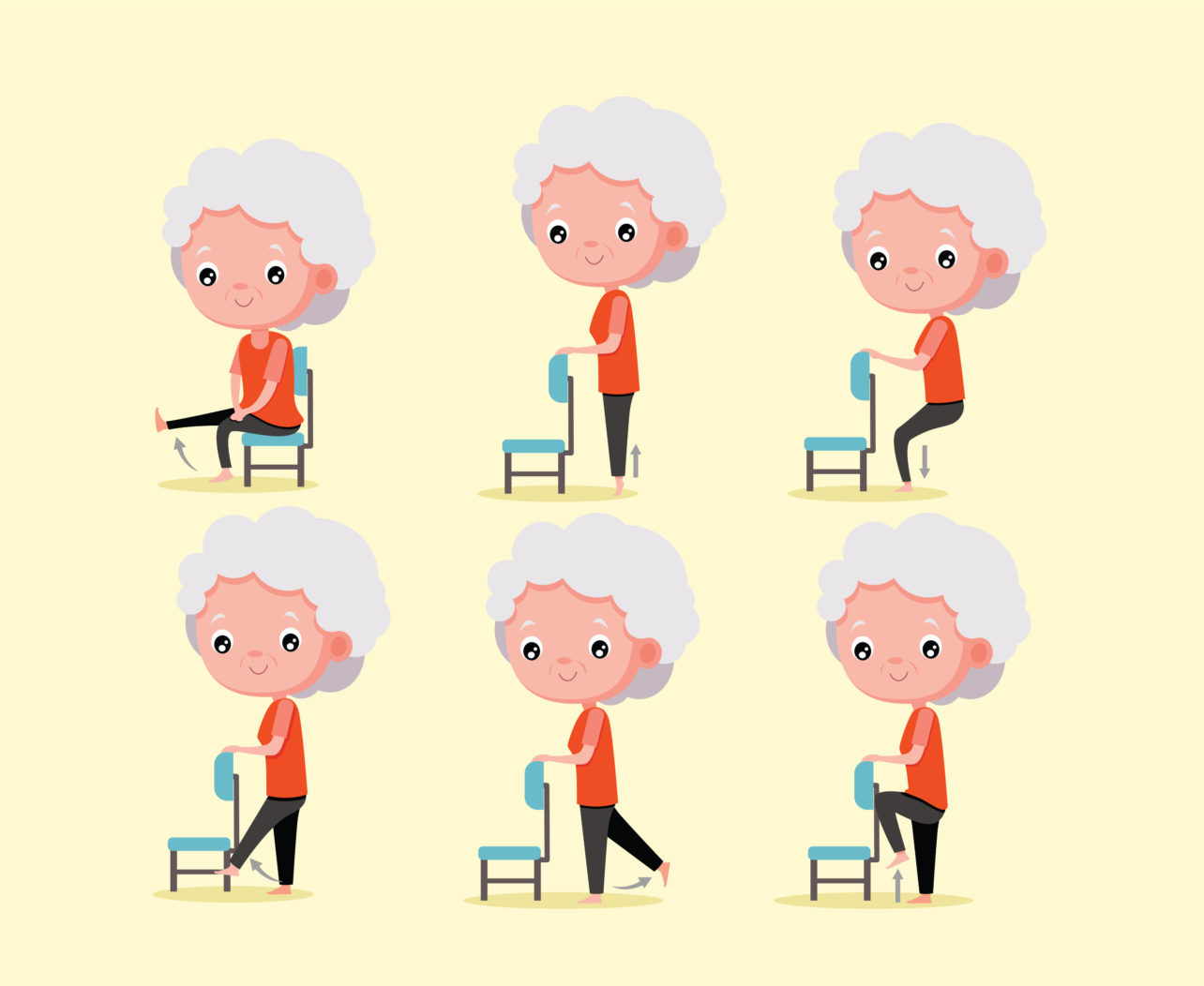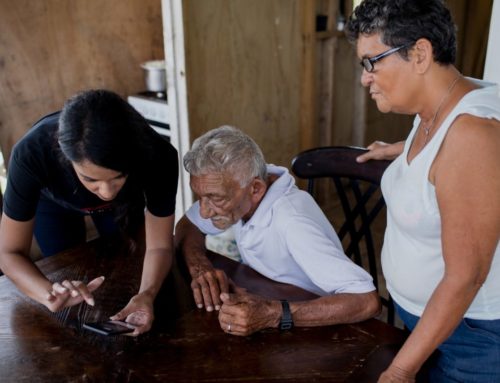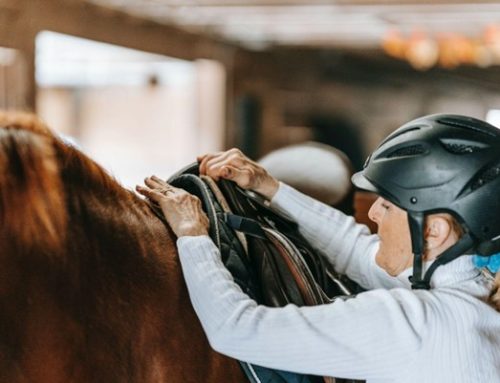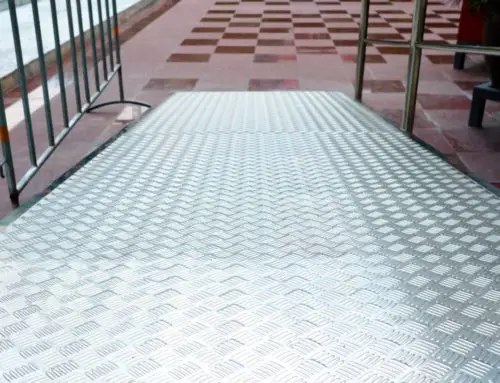The idea of fitness as a senior can be intimidating if you have a lot of chronic aches and pains or other medical conditions. Modified exercises can help strengthen your muscles and improve your flexibility without putting added strain on the body. Chair exercises provide seniors with the benefits of exercise, with minimal risk involved.
How To Get Started With Chair Aerobics
Before beginning a chair aerobics routine, it is important to consider a few things, including:
- Physician approval: Before beginning any chair exercise routine, you should discuss your capabilities and limitations with your physician or a physical therapist.
- Get the equipment needed: You don’t need much equipment to begin chair exercises, you will want a sturdy chair and, depending on your exercises, dumbbells or resistance bands.
- Consider your goals: It can also be helpful to consider your goals. Do you want to strengthen your arms, legs, or core? Do you want to increase flexibility or muscle tone?
- Learn from workout videos: Using visual aids, like workout videos, can help you learn proper movement and stance for doing common chair exercises for seniors.
When deciding the best chair routine for your needs, make sure you also consider certain exercise guidelines for seniors. This includes things like learning to listen to your body. If something causes pain or discomfort, it is best to stop the workout routine and discuss it with your physician.
Warm-Up Chair Exercises
It is always a good idea to warm up before beginning any type of fitness program, even chair exercises. Warm up with the following exercises:
- Get the blood moving: Sit in your chair and get your blood flowing by stomping your feet in front of you. You might alternate, moving your legs from one side of the chair to the other. Then, move your arms in circles, first next to you, and then, with your arms rotating above your head.
- Left/right movements: Moving the body, in a seated position, from the left to the right side of the chair, engages your core.
- Standing warm-up: Stand up next to your chair, holding the back for support. Then, march your legs in place until you feel warmed up and ready to go.
- Ankle and wrist rolls: It is always a good idea to warm up the ankles and wrists before doing chair routines. Sit with your back flat against the back of the chair. Flex your fingers and toes out in front of you, rolling them in the same direction 10 times. Then, repeat, moving them in the opposite rotating direction.
These warm-up exercises are essential to get the body moving, helping you avoid injury. Each fitness routine should begin with a warm-up session.
Chair Exercises for Arms
You can also work on your arms with chair exercises. When doing arm exercises, you may choose to add additional equipment, like dumbbells. Here are a few chair exercises for arms:
- Dumbbell workout: Sit, holding a dumbbell in one hand. Bend at the elbows, and bring the dumbbell up to your shoulder, keeping your elbow tucked in. Continue for 10 repetitions and then rest before moving onto the next arm. Then, repeat 10 repetitions with the other arm, being sure to take breaks in between. This seated workout is great for the upper body!
- Seated row: Sit on the edge of your chair. Hold your arms out in front of you, with your thumbs pointed up. Pull your elbows back, squeezing the shoulder blades together. Extend the arms, and continue for 8-10 repetitions. You might also add in weights to increase pressure on your muscles.
- Seated jumping jacks: Get the same cardio exercise from jumping jacks, without the pressure on your knees and ankles with a low impact exercise. Sit on the edge of your seat, extend your arms out on your side, then pull them upward as if you were doing a jumping jack.
- Sit and reach exercise: Sit straight with your knees together. Extend your right arm straight up toward the ceiling. Stretch the body, and look up at your arm. Hold for ten seconds, and then switch to the other arm. Continue for a total of 10 repetitions. You might use a dumbbell or can of vegetables to deepen the workout.
Chair Exercises for Legs
You can increase the strength and flexibility of your leg muscles by doing chair exercises. Here are a few chair-based exercises for legs:
- Knee raises: Before working on your knees, make sure your back is flat against the back of the chair, focusing on good posture. Place your hands on the side of your body or in your lap. You might also use them to guide your legs. Extend your right knee in front of you, squeezing your thigh and calf muscles tightly. Hold for four seconds, and then move onto the next leg. Repeat for 10 repetitions.
- Calf raises: Sit tall with your back against the chair. Engage your core and lift the right leg heel from the ground, as far as you can. Hold for four seconds, and then replace it on the ground. Then do the other side, and repeat for a total of 10 repetitions.
- Ankle pumps: Make sure your back is flat on the back of the chair. Put your legs out in front of you, then lift the legs off of the ground. Using your ankles, pull inward. Hold for four seconds, relax, and then repeat for 10 repetitions.
- Leg squats: Squats are a good way to work out your legs and glutes. Stand, using the chair for support. Move down into a squat position, keeping your core engaged and your back tight. Stand, and repeat for 10 repetitions. You can also modify this and start sitting in the chair. Then, put your feet down and stand as if you were getting out of the chair, stand up, then sit. Repeat for 10 repetitions.
Chair Core Exercises
Strengthening your core is also crucial for protecting your body from injury. This also helps with spinal mobility issues. Here are a few top core chair exercises that focus on core strength:
- Torso or tummy twists: Sit tall with your legs about hip-distance wide. Put your hands in your lap or on your knees. Keep the pelvis flat on the chair and twist the torso to the right. You can use your hands for a deeper stretching exercise, but only if it is comfortable. Then, return to the center, and move to the opposite side. Repeat for 10 repetitions.
- Modified planks: Planks are good for strengthening and engaging the core muscles of the body. Put the chair in a safe location, where it won’t move, such as against a wall. Put your hands on the back of the chair, engage your core, and step back. Hold the modified plan position for ten seconds before stepping back up to a standing position. Repeat for 10 repetitions.
- Modified burpees: Push the chair back against the wall again, so that it won’t move. Face the chair, bend at the knees, and go into a half-squat. Put your hands on the seat of the chair, fully extending the arms. Start with the right foot stepping back, into the modified chair position. Then step the left foot to meet the right and come back, raising your arms above your head and clapping once. Continue for 10 repetitions.
- Seated tap dance: The seated exercise tap dance is also a fun cardio exercise that you might pair with some music. Sit straight with your knees bent, with the toes lightly on the floor. Extend one leg, tap your heel on the ground, lift, point your toes, and tap it to the floor. Flex, and return to your heel, and then your toe again. Continue for two minutes, then change legs. Keep the abdominal muscles and core engaged the whole time.
Even certain fitness activities, like chair yoga, can be beneficial to aging adults.
Benefits of Exercise for Seniors
Fitness is important, regardless of your age, gender, or physical condition. Even seniors should find a fitness routine that keeps them moving, and chair workout exercises can be a good option.
The Centers for Disease Control and Prevention (CDC) recommends that seniors reach at least 150 minutes each week of physical activity, as well as a few days of muscle strengthening.
Older adults can enjoy the following benefits of regular exercise:
- Decreased risk of some health conditions, including heart disease and diabetes.
- Strengthening of muscles to prevent injury
- Decreased chance of dementia
- Improved mood and decreased risk of depression
- Increased circulation
- Better balance
- Decrease of joint pain by improving limited mobility
- Quicker recovery from surgery
- Decreased chance of osteoarthritis
- Decreased stress and anxiety
Exercise offers a long list of benefits. Many of these benefits, including increased blood circulation and better balance, are very beneficial to seniors. Learning to adjust your workouts to exercise at home as a senior with the assistance of a chair workout can help you manage certain health symptoms while also improving your overall health.
Flexibility, mobility, blood circulation, and strength are important to senior health. Yet, with common medical conditions, it can feel difficult to find an exercise program that works. Chair exercises allow older adults to modify certain moves while also helping them to improve their overall health.




